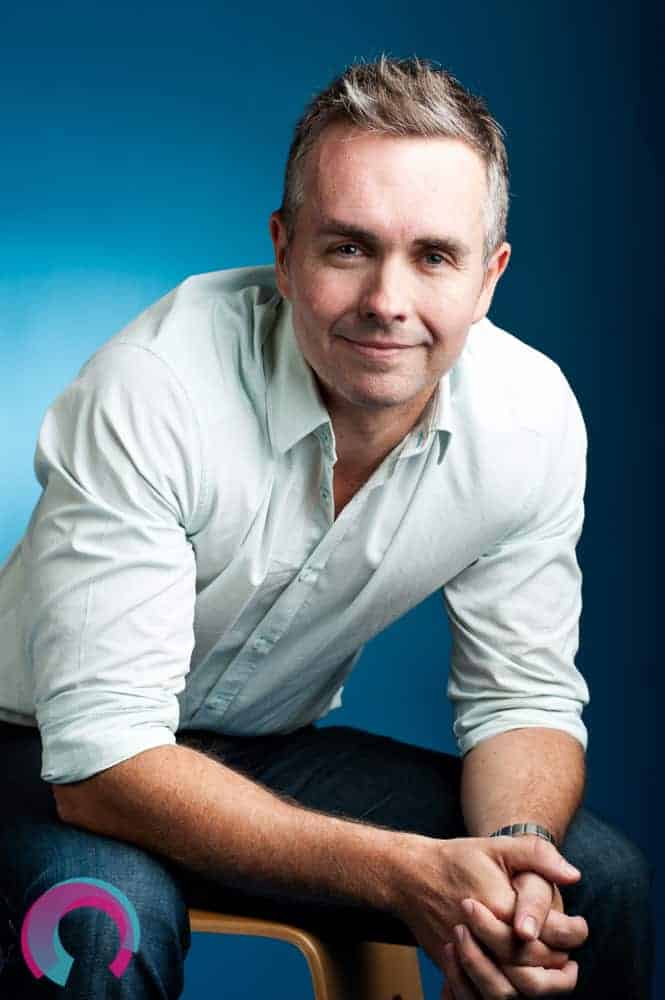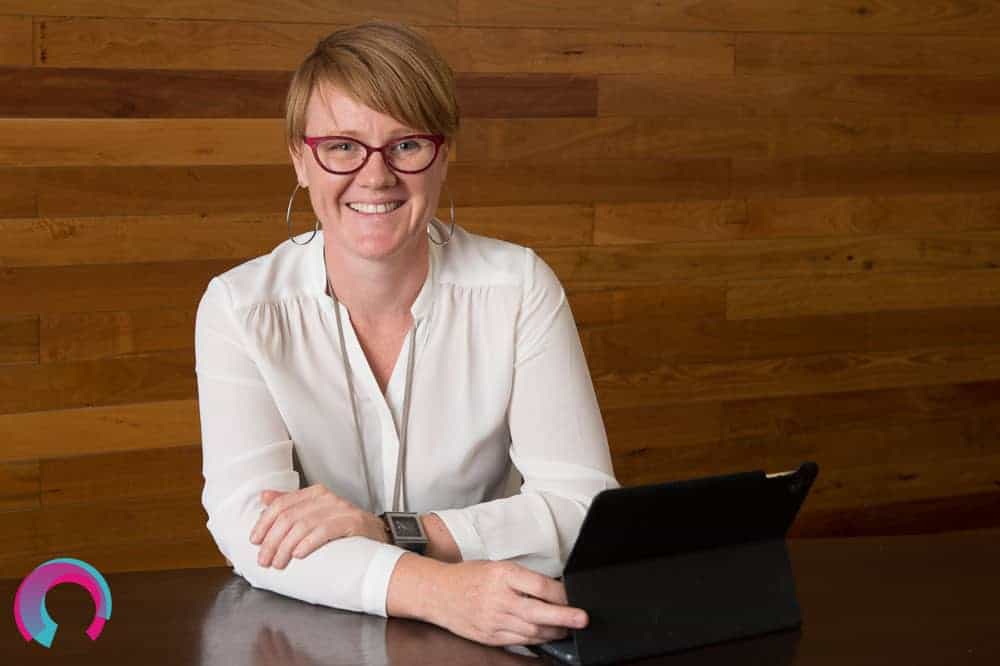Let’s face it. Most people would rather have a rectal exam than a corporate portrait. But it doesn’t have to be that way. Here are some tips to help you prepare.
Tip 1: We’re not negotiating world peace
Having your photo taken is probably the easiest thing you’ll do at work that day. Not to say it’s the least stressful. But, literally, all you have to do is stand still for a few minutes while someone tells you crappy jokes so you’ll smile naturally. The process is really straight forward. But I know that’s not what you’re worried about. You’re worried about your hair, clothes, teeth, tummy, third nipple, hands, etc. Which brings me to tip 2…
Tip 2: Tell the photographer you don’t like your [insert offending body part here]
I am so grateful when a portrait subject tells me they’re worried about something. It means I can work with them to create a photograph they really love. I can alter the lighting, change the angle, choose a different pose or encourage a different expression.
Professional photographers are paid to make you look good. So help us do that. Ask the photographer to show you a few frames as they go so you can work together to get a great result. If they don’t want to show you, they’re being a precious tool.
Tip 3: Who’s the audience?
Who will see these portraits and in what context? This determines the general tone of your image and guides the photographer on things like the background, props, and lighting. But most importantly for you, it will guide your expression and your pose. Do you want to appear relaxed and approachable, or ultra professional?
- Sitting and leaning are generally more relaxed than standing
- A white background can be more formal (and DEAD BORING) than a background that gives your work context. I reluctantly admit white backgrounds do have their place. But I also think there are much better approaches. COUGH*DeathToWhiteBackgrounds

Sitting down can be tricky to pull off. The key is not to slouch and lean into the camera, like you’re having a conversation with the viewer. This is much more engaging. So much more relaxing for the subject than just standing like a giant pickle. Not that you could ever describe Warrick as a giant pickle…
Tip 4: Will you ever have to deliver bad news?
When a radio interview is played on TV there is usually no video footage to go along with it. This is common in situations that develop rapidly. The TV station needs some visual, so they usually put a portrait of the interviewee next to a little waveform of the audio.
If you’re delivering bad news or commenting on something controversial, do you want people looking at your smiling mug? Probably not. So, make sure you grab a few ‘serious’ portraits as well if you might be in this situation (CEO’s and business owners, for example).
Tip 5: What to wear
What would you wear to a meeting with a really important client? What impression would you like to leave them with? My advice is to wear that. But make sure it’s also
- Something you feel good/confident in
- Very clean and freshly ironed (especially important for PPE)
- Reflective of the work you do
Context is really important. For example, if you’re an engineer who always works on-site you may only wear PPE to work. So a regular business shirt/blouse may not make sense for you. Choose something that’s relevant to your job.
Keep it simple. Colours are great. But anything with a crazy stripe or pattern can cause your face to get lost. No Dr Karl’s please. Unless you are actually Dr Karl, in which case, carry on. If you’re unsure, bring a backup or two and the photographer can help you decide.
For the love of all things corporate, please don’t wear all black. A black top covered with a black jacket doesn’t actually suit that many people. It can make you look washed out. If you need to wear a jacket, by all means, go for black. But throw something underneath that’s not black.
Tip 6: Uniforms
If you have a uniform make sure it’s the most recent version. If it has an old logo don’t even think about it. If you have a choice between a polo shirt or business shirt, always go the latter. If you’re on site and need PPE, wear everything, even if you don’t normally. Safety rules change and you don’t want your portrait to be obsolete because the rules around safety glasses changed.
Tip 7: Hair
As someone who’s hair regularly looks like a lion was attacked by a possum I have sympathy for you. But do your best to wrangle your hair so it’s neatly styled. Long hair doesn’t need to be tied back. Just make sure it’s not hanging over your face.
Avoid having a haircut the same day; tiny shards of hair on your shoulder don’t look great. And we all know it takes a few days for a haircut to go from ‘I’m a monster! I’m never showing my face in public again!’, to ‘Huh. It’s okay, I guess’
Tip 8: Makeup & Shiny Skin
Keep makeup simple. It seems counterintuitive but really heavy foundation and dark eye makeup can look terrible in photographs, so keep it light. If you’re being photographed at the end of the day you can always touch things up just before the portrait. If you’ve got a pressed powder bring it along. If not we can fix that with some sandpaper. Or, you know, a tissue.
Tip 9: Glasses
If people usually see you with glasses on, wear them. But give them a really good clean first and make sure they’re pushed as far up on your face as they will go. That way, we’ll be able to see all of your eyes.
Tip 10: The more equipment, the better
It can be quite intimidating having your portrait taken. Especially when there’s a lot of gear and a huge camera. But you should know the closer that huge light is to your face the better you will look. Also, the more lights there are the more interesting and flattering your portrait will be. So don’t be scared by all the gear. Rejoice! For your photographer is going to make you look fabulous.
Tip 11: The most important thing…
Worried that one eyebrow is higher than the other? Nose slightly crooked? Dimples look weird? Let me tell you something… Nobody else sees it. You know what they do see?
Your smile. That’s it.
If your smile is genuine, open and relaxed people will love your portrait. I guarantee it. When making the final choice for your images get other people to weigh in as well. They probably won’t choose the same ones you do, but they will choose the ones that are the most natural looking. And they will definitely not see any of the things you’re worried about.
This is a portrait of me without any photoshopping. There are so many things I could pick on, but I like it because I have a natural smile. Even if I’m accidentally flipping the bird to the camera. Look, I’ve got a dodgy finger that doesn’t bend, okay?
In summary
Professional photographers need to make you look good in order to get repeat business. It is their job to make you look great and they’re your biggest ally in this whole debacle. So treat it like a collaboration and you’ll get a fantastic corporate portrait.






